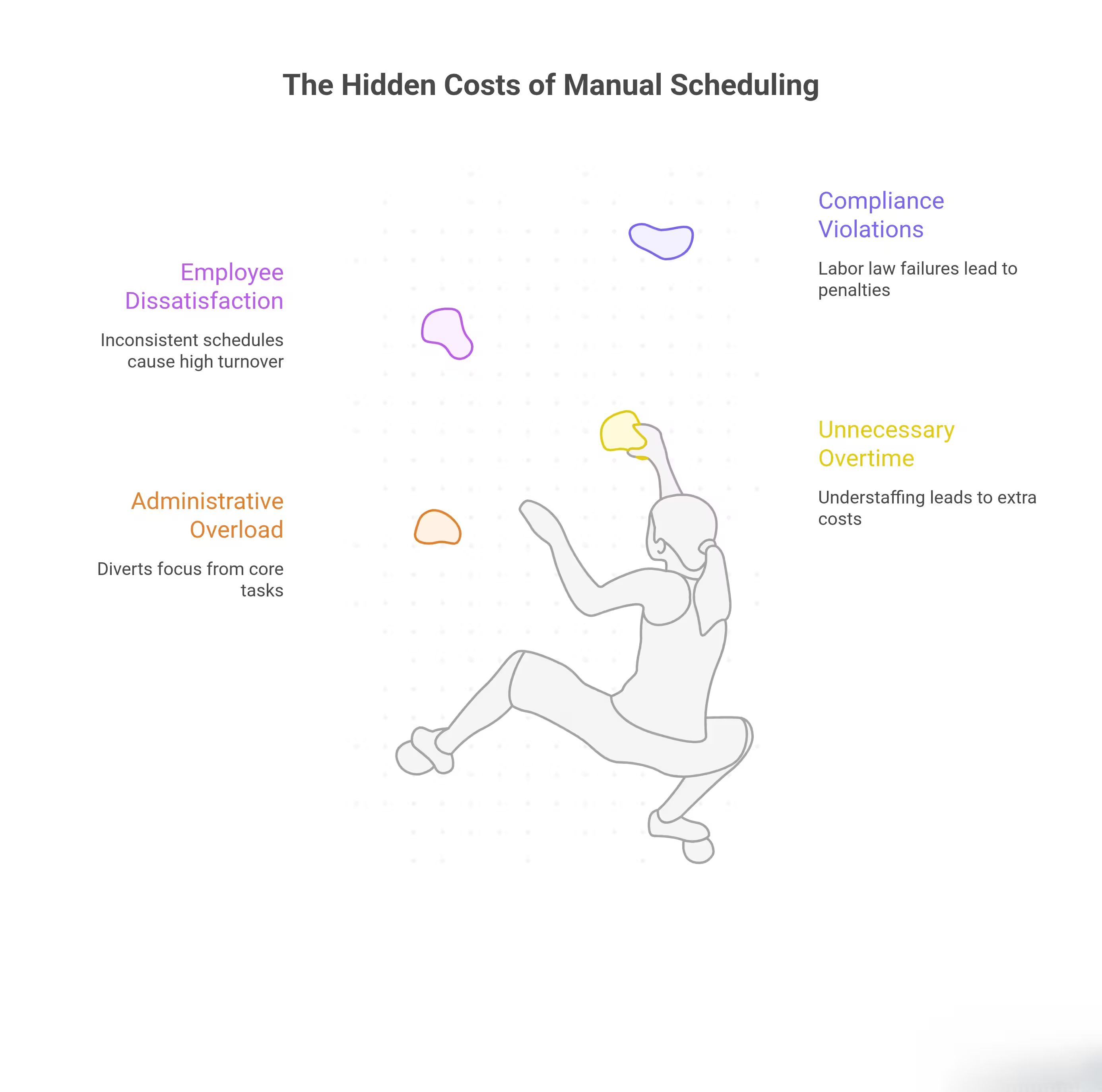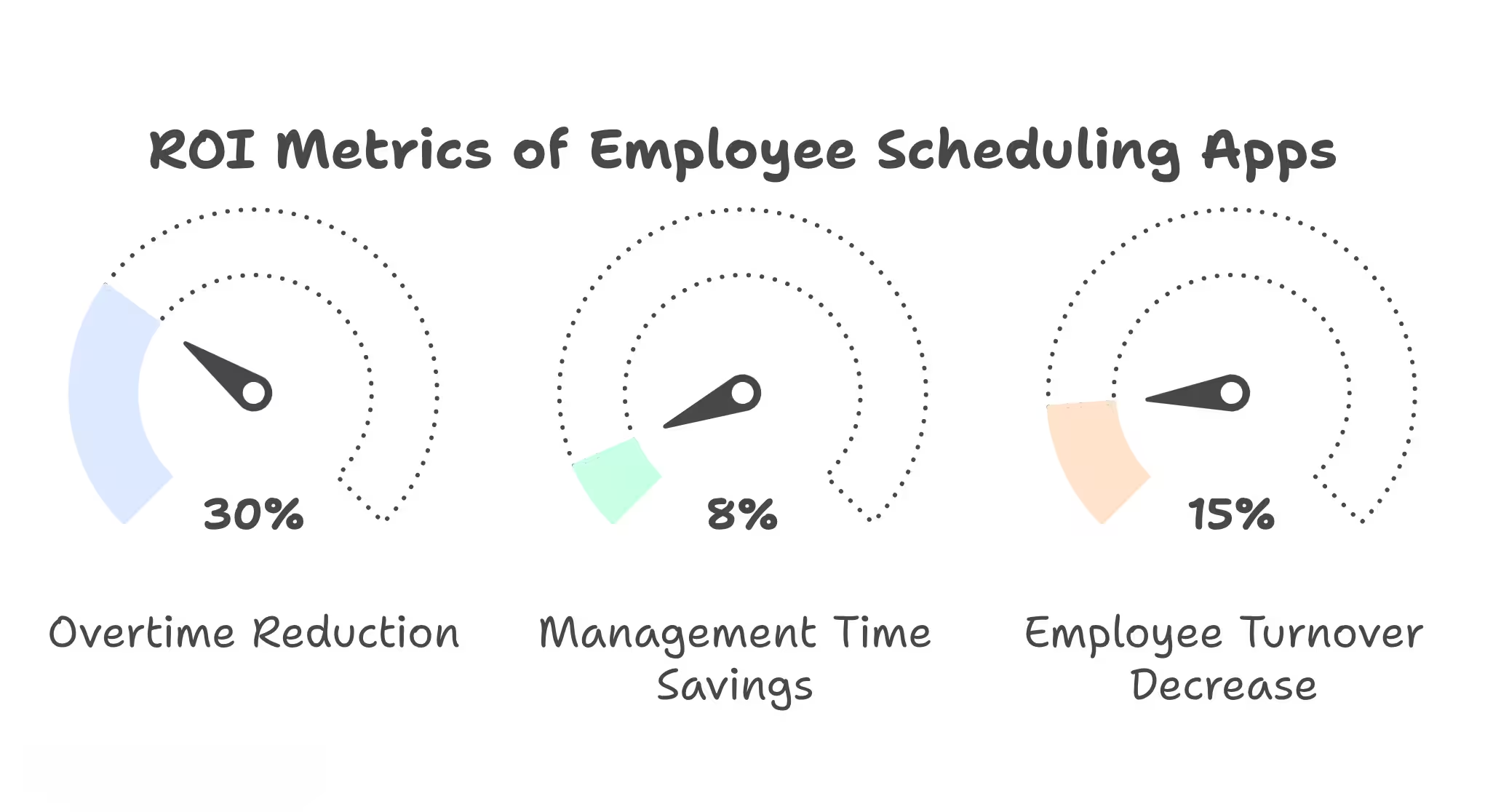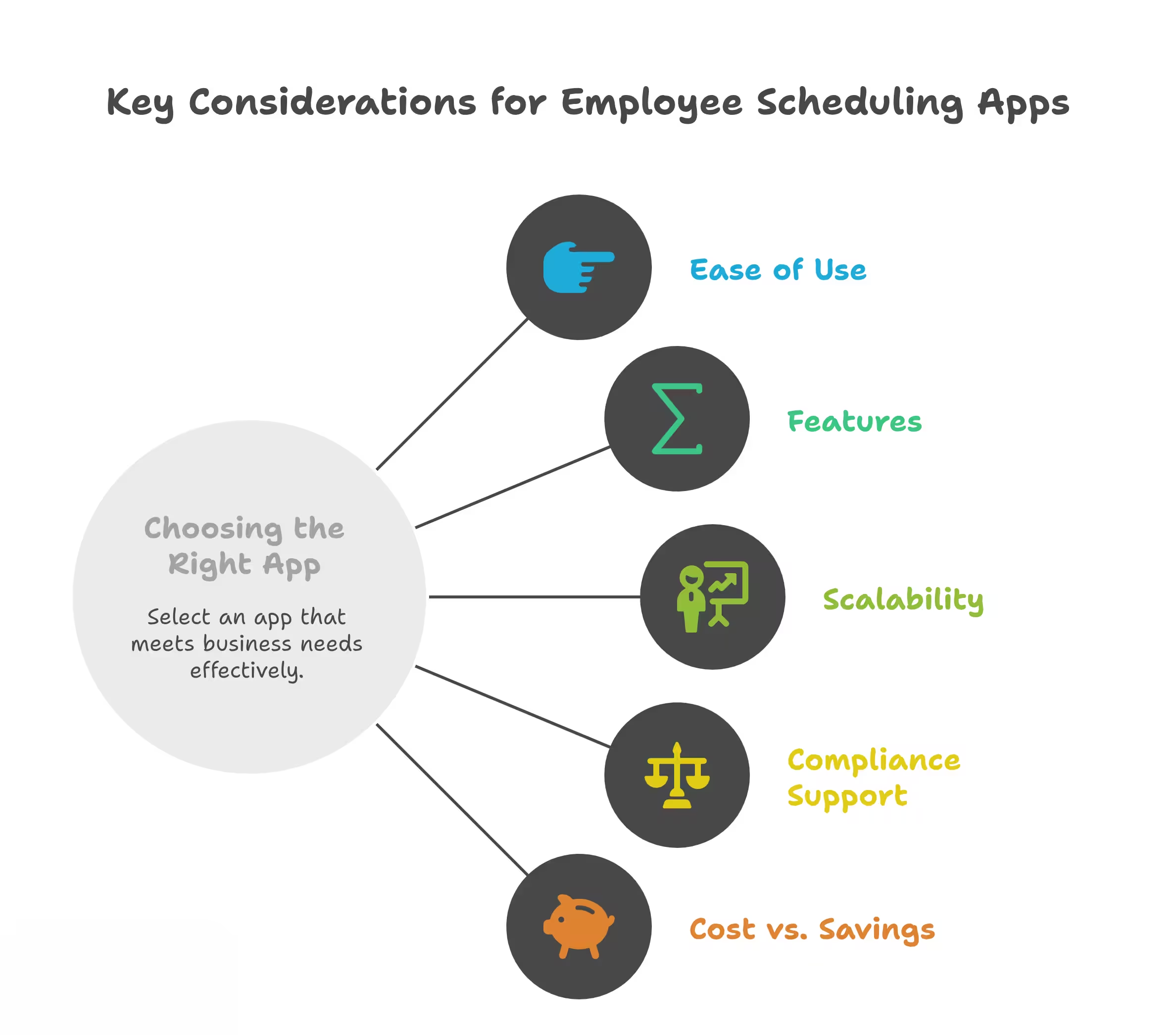The Real ROI of Using an Employee Scheduling App

Introduction
Managing employee schedules can be one of the most time-consuming tasks for businesses, especially those with hourly workers or multiple shifts. From last-minute shift changes to balancing employee availability, manual scheduling often leads to errors, overtime costs, and employee dissatisfaction. This is where employee scheduling apps come in, offering automation, real-time visibility, and streamlined communication. But beyond convenience, what is the actual return on investment (ROI) for businesses using these tools?
In this article, we explore the real ROI of using an employee scheduling app, including financial savings, operational efficiency, and employee engagement benefits.
What Is an Employee Scheduling App?
An employee scheduling app is a software solution designed to digitally manage and optimize work schedules. Key features typically include:
- Shift Management: Assigning shifts based on employee availability and business needs.
- Time Tracking: Automatically recording hours worked and overtime.
- Notifications and Alerts: Informing employees of shift changes and upcoming shifts.
- Reporting and Analytics: Tracking labor costs, productivity, and attendance trends.
- Payroll Integration: Synchronizing hours worked with payroll systems for accurate payment.
Comprehensive solutions like ShiftsTrack offer features such as multi-site scheduling, real-time hour tracking, and labor regulation compliance.
The Hidden Costs of Manual Scheduling
Many businesses underestimate the true cost of manual scheduling, which can significantly impact profitability. These hidden costs include:
- Time Wasted on Administrative Tasks: Managers spend considerable time creating schedules, approving shift swaps, and handling absences, diverting their attention from strategic activities.
- Overtime Costs: Manual scheduling errors often lead to understaffed shifts, resulting in overtime pay, employee fatigue, and reduced productivity.
- Employee Turnover and Dissatisfaction: Inconsistent scheduling, lack of transparency, and inflexibility can lead to employee frustration and higher turnover rates, increasing hiring and training costs.
- Compliance Risks: Failure to comply with labor laws regarding work hours, breaks, and overtime can result in fines and legal penalties.
Switching to an employee scheduling app can mitigate these costs and improve operational efficiency.

Calculating the ROI of an Employee Scheduling App
The ROI of a scheduling app can be measured in both financial terms and soft benefits. Here’s how:
1. Labor Cost Savings
- Reduced Overtime: Automated alerts help managers prevent unnecessary overtime by monitoring hours worked in real-time.
- Optimized Coverage: Scheduling apps analyze staffing needs based on historical data, ensuring shifts are adequately covered without overstaffing.
- Fewer No-Shows: Notifications and reminders reduce the likelihood of employees missing shifts, preventing costly last-minute replacements.
2. Time Savings
- Managers save hours every week previously spent on creating schedules manually.
- Employees spend less time confirming shifts, requesting swaps, or communicating availability.
- Tools like ShiftsTrack provide centralized dashboards, real-time updates, and shift templates, reducing repetitive scheduling tasks.
3. Improved Employee Engagement
- Employees gain access to their schedules on mobile devices.
- Shift swapping and availability submissions become easier, giving employees more control over their work-life balance.
- Higher engagement leads to better retention, reducing recruitment and training costs.
4. Enhanced Compliance
- Apps track hours, breaks, and overtime automatically.
- Alerts ensure managers remain compliant with labor laws.
- Reduced risk of fines or lawsuits saves money and protects your business’s reputation.
Real-World Examples of ROI
Example 1: Reducing Overtime CostsA retail store with 50 employees manually schedules shifts each week. By switching to ShiftsTrack:
- Overtime hours decreased by 30%.
- Estimated savings on payroll: $5,000 per month.
A healthcare facility with 20 nurses spends 10 hours weekly on scheduling. After implementing an app:
- Administrative time reduced to 2 hours per week.
- Managers could redirect 8 hours weekly toward patient care or strategic planning.
A restaurant with high staff turnover adopted a scheduling app:
- Employee satisfaction scores improved due to fairer and more transparent scheduling.
- Staff turnover decreased by 15%, saving recruitment and training costs.
These examples demonstrate that the ROI of employee scheduling apps is not just in financial savings but also in operational efficiency and workforce stability.

Additional Benefits of Employee Scheduling Apps
- Data-Driven Insights: Analyze patterns in staffing, absenteeism, and productivity to make smarter decisions.
- Scalability: Easily manage schedules as your business grows or adds new locations.
- Mobile Accessibility: Employees can view schedules, request time off, and communicate on the go.
- Integration with Payroll and HR: Automates payroll calculations and maintains accurate records for HR compliance.
Choosing the Right Employee Scheduling App
When evaluating an app, consider the following:
- Ease of Use: Both managers and employees should navigate it intuitively.
- Features: Look for shift management, time tracking, notifications, reporting, and payroll integration.
- Scalability: Ensure the app can grow with your business.
- Compliance Support: Must help adhere to labor laws.
- Cost vs. Savings: Compare subscription fees against potential savings from reduced overtime, admin time, and turnover.
ShiftsTrack, for example, offers comprehensive features designed to maximize ROI for businesses of all sizes, particularly those managing multiple clients, sites, and field staff.

Conclusion
The real ROI of using an employee scheduling app goes far beyond convenience. Businesses save on labor costs, minimize overtime, reduce administrative time, and improve employee engagement and retention. When you factor in compliance benefits and operational efficiency, the investment pays for itself quickly.
For businesses looking to stay competitive, streamline operations, and retain top talent, adopting a modern employee scheduling app like ShiftsTrack is no longer optional—it’s essential.